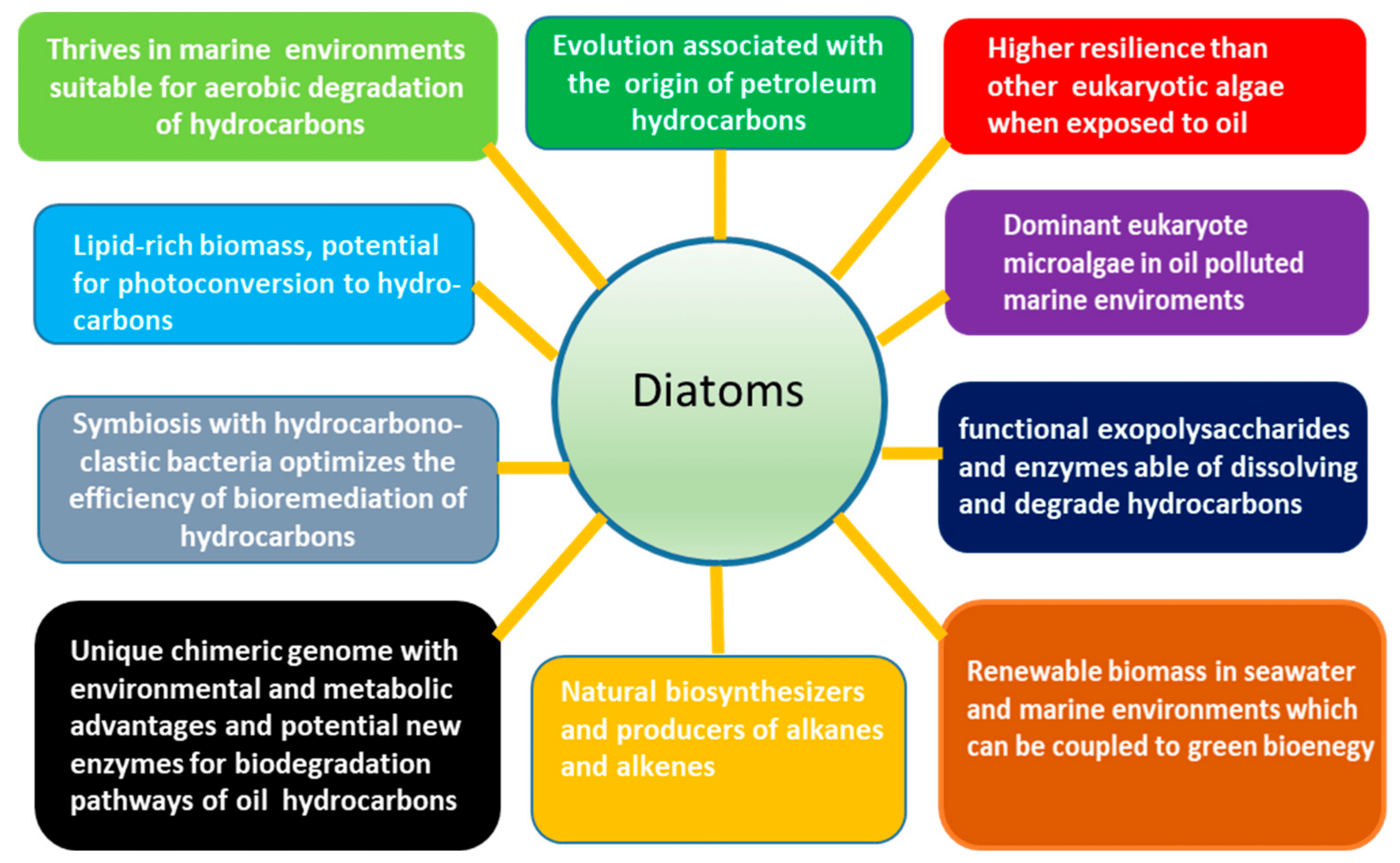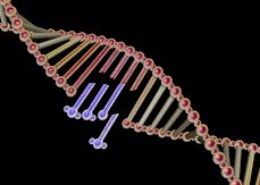figure: Attributes of diatoms for the biodegradation and bioremediation of petroleum hydrocarbons in the marine environment. Diatoms, a type of marine microalgae, offer significant potential for bioremediation due to their unique properties and capabilities: Nutrient Removal: Diatoms can absorb andRead more

figure: Attributes of diatoms for the biodegradation and bioremediation of petroleum hydrocarbons in the marine environment.
Diatoms, a type of marine microalgae, offer significant potential for bioremediation due to their unique properties and capabilities:
- Nutrient Removal: Diatoms can absorb and utilize nutrients like nitrogen and phosphorus, reducing nutrient levels in aquatic environments. This ability helps mitigate eutrophication, a common issue in polluted waters.
- Heavy Metal Sequestration: Some species of diatoms can bioaccumulate heavy metals such as mercury, cadmium, and lead from water. This process helps in cleaning up contaminated sites and reducing toxic levels in aquatic ecosystems.
- Carbon Sequestration: Diatoms are efficient photosynthesizers, converting CO2 into organic biomass. Cultivating diatoms can potentially mitigate climate change by sequestering carbon dioxide from the atmosphere.
- Oil Spill Cleanup: Diatoms produce extracellular polysaccharides that can absorb hydrocarbons. This property makes them useful in cleaning up oil spills by binding and immobilizing oil droplets on the water surface.
- Biological Sensors: Diatoms respond to changes in environmental conditions, making them useful as biosensors to detect pollutants in water bodies.
- Biofuels and Bioproducts: Some diatom species have lipid-rich biomass suitable for biofuel production. Their cultivation for biofuels can offer an eco-friendly alternative to fossil fuels.
Utilizing diatoms for bioremediation requires understanding species-specific capabilities, optimizing growth conditions, and integrating their use into existing environmental management strategies. Research continues to explore and expand the potential applications of diatoms in sustainable bioremediation practices worldwide.
See less


Genetic modification raises several ethical considerations: 1. Unintended consequences: Genetic changes may have unforeseen effects on the individual, species, or ecosystem. 2. Equity and access: Genetic enhancements may only be available to those with resources, exacerbating social inequalities. 3.Read more
Genetic modification raises several ethical considerations:
1. Unintended consequences: Genetic changes may have unforeseen effects on the individual, species, or ecosystem.
2. Equity and access: Genetic enhancements may only be available to those with resources, exacerbating social inequalities.
3. Informed consent: Individuals may not fully understand the implications of genetic modifications, and there is a risk of coercion or pressure to undergo genetic changes.
4. Genetic determinism: Overemphasizing genetic factors may lead to neglect of environmental and social influences on human development.
5. Human identity and values: Genetic modification may challenge traditional notions of human identity, raising questions about what it means to be human.
6. Playing God: Some people believe that humans should not interfere with nature and the natural course of evolution.
7. Privacy and discrimination: Genetic information may be used for non-medical purposes, such as employment or insurance discrimination.
8. Safety and regulation: Lack of regulation and oversight may lead to unsafe genetic modifications.
These ethical considerations highlight the need for careful consideration, open dialogue, and responsible regulation of genetic modification technologies.
See less